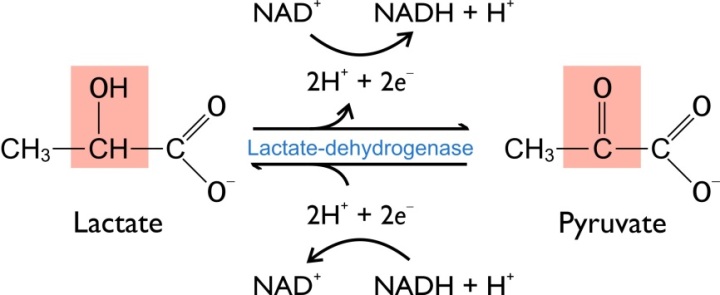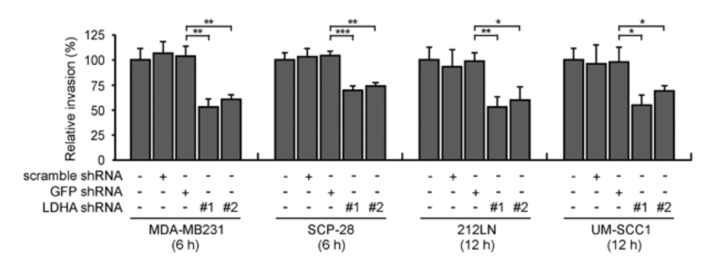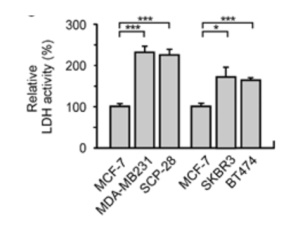Most of us have been affected by it or know someone who has and with 356,860 cases in the UK alone in 2014 (according to CRUK) it is arguably the most prevalent disease in the world – I’m of course talking about cancer.
Cancer is a mass of cells with uncontrolled replication and the ability to invade other areas of the body through a process known as metastasis. It is caused by mutations in genes which regulate the cell’s ability to divide in a normal manner. Although cancer is never a good thing, in most cases it is treatable until it spreads to nearby areas (metastasises) – in fact, it’s been found that around 90% of all cancer mortalities can be attributed to metastatic cancers. Anoikis is a process which prevents cells from spreading around the body by inducing programmed cell death, termed apoptosis, once the cell detaches from its surroundings (called the extracellular matrix). For a cancer to invade other tissues, it must be able to avoid anoikis and undergo what is known as the Warburg effect. The Warburg effect details the change when cancer cells switch from oxidative phosphorylation to aerobic glycolysis (break down of glucose to pyruvate) as the main source of energy. This change in energy production allows the cells to survive and reproduce in low oxygen environments.
A recent study published last month in Oncogene by Jin et al., aimed to investigate how this Warburg effect arises through tyrosine kinase signalling (the addition of phosphate molecules to tyrosine amino acids). They specifically looked at the enzyme LDHA (lactate dehydrogenase A) which is a crucial component of glycolysis and previously found to be upregulated in tumours. LDHA catalyses the reversible reaction of pyruvate to lactate or vice versa (picture below) and it has also, previously been found to promote cancer tumour metastasis. In this study the authors focused particularly on LDHA’s ability to affect metastasis and anoikis resistance.

Metastases can occur in a variety of cancers but have been found to be common occurrences in particular types of cancer. In breast and squamous cell carcinoma of the head and neck (SCCHN) around 30% of all incidences ultimately develop metastases. As these two combined cancers affect 65,000 people a year I think we can all agree that figuring out the cause of metastasis is a problem that needs to be solved.
Jin et al. examined LDHA activated by tyrosine phosphorylation – adding a phosphate molecule to a tyrosine amino acid – in SCCHN and breast cancers, specifically using different cell lines derived from affected tissue. They started by demonstrating there was a link between LDHA and tumour invasion by reducing the gene expression of LDHA (known as knockdown). This was done through LDHA RNA clones which work by preventing gene expression thus silencing the target gene. The cells without LDHA were compared to normal cancer cells (which acted as a control) in terms of relative invasion and it was seen that invasion significantly reduced in the cells without LDHA present – seen in Graph a below taken from the paper. Using the same method, it was also found that LDHA knockdown increased the percentage of anoikis induced cell death, indicating LDHA can directly influence a cancer’s ability to avoid apoptosis as illustrated in Graph b.


The next step in the investigation was to see the effect of the activating phosphorylation at tyrosine at position 10 (Y10) in the protein’s sequence. By measuring the NADH oxidation – a product of the reaction LDHA catalyses – they demonstrated the increases activity of LDHA. Additionally, using an assay, which is a method of analysing the amount of a cell or molecule, the phosphorylation increased the percentage of invasion ranging from between 100% and 500%, varying between the different cell lines used. Anoikis assays were also used for the same cell lines and established that the Y10 phosphorylation correlated with a higher anoikis resistance in the cells.
Jin et al. went on to prove that two specific tyrosine kinases – the enzymes which add phosphate to tyrosine – named HER2 and Src were responsible for the phosphorylation at Y10. These enzymes are commonly dysfunctional in breast cancer and SCCHN – in 3% of SCCHN and 20% of breast cancer cases there is excessive HER2 production. This occurrence is what led the team to investigate these two enzymes in particular. The link between LDHA and tumour metastasis is a new revelation in the world of oncology. It may provide new ways for future prevention and treatment of cancers with upregulated HER2/Src, though the use of biomarkers and gene silencing.
The fact LDHA activation can affect tissue invasion implies it is not the enzyme but its products, which are produced in the Warburg effect – that it’s actually lactate that conveys anoikis resistance and tumour metastasis. Lactate’s involvement with cancer progression has been noted before, being linked to VEGF protein expression by mimicking lack of oxygen, in turn stimulating the formation of blood vessels (termed angiogenesis). This lends backing to the idea that lactate may be assist tumour development. The study’s result highlights the importance of the Warburg effect in cancers and how adverse its consequences can be on the prognosis of the affected patient.
The paper itself is concisely written and fairly easy to understand (assuming a background knowledge of cancer), however I found the figures they used occasionally confusing with a lack of comparative graphs to demonstrate the full effect the phosphorylation. Also, may just be the mathematician in me nit-picking, but when using graphs such as the one below the error bars do not show the full scale of error, only in the positive direction as opposed both direction which would show the correct amount of error.

In any case, this research has shed new light upon the fairly unknown mechanics of tumour invasion and established a link between the activation of LDHA and the ability for cancer metastasise. It will be exciting to see where this discovery can lead medicine in the fight against cancer and the future research that will stem from this work.
Here is the link to the original paper: http://www.nature.com.sci-hub.cc/onc/journal/vaop/ncurrent/full/onc20176a.html
And some links to further reading if you’re interested:
- The Warburg effect: https://www.ncbi.nlm.nih.gov/pmc/articles/PMC2849637/
- Breast cancer metastasis: https://www.ncbi.nlm.nih.gov/pmc/articles/PMC3711134/
- Lactate and VEGF: http://www.jbc.org/content/early/2013/
06/10/jbc.M113.474619.full.pdf - NHS summary of different head and neck cancers with good basic background information linked: http://www.nhs.uk/conditions/cancer-of-the-head-and-neck/Pages/Definition.aspx
Lactate Dehydrogenase A reaction picture from: http://elte.prompt.hu/sites/default/files/tananyagok/
IntroductionToPracticalBiochemistry/ch07s06.html
All graphs taken from the original paper
Title image from: http://nerdreactor.com/wp-content/uploads/2015/11/cancercells.jpg
